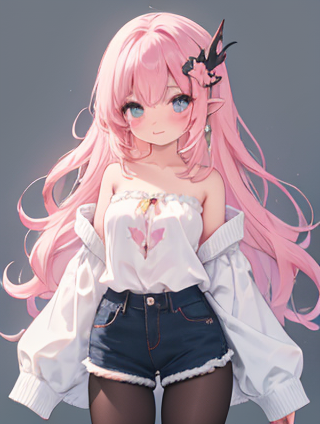TheEvolutionofWomen'sAttitudesTowardLove
- 洞察
- 2025-01-24 01:11:02
- 6
In the ever-evolving landscape of society, women’s attitudes toward love have undergone significant transformations. From traditional roles and expectations to modern perspectives that prioritize personal fulfillment and independence, women’s views on romance and relationships have shifted dramatically over the decades. This article explores these changes through various stages of history, examining how cultural shifts, social movements, and individual experiences have influenced women's approaches to love.
Historical Context: Traditional Roles and Expectations
For centuries, societal norms dictated that women were primarily responsible for domestic duties and child-rearing within the family structure. Marriage was often seen as a means of securing financial stability, and emotional connections were secondary. The concept of “true love” and deep romantic relationships was not always central to marriage in traditional settings. Women’s education and career opportunities were limited, further reinforcing their roles as caretakers and homemakers.
The Early Twentieth Century: The Rise of Modernism
With the dawn of the 20th century came a wave of modernist ideas that began to challenge these long-held traditions. The women's suffrage movement in countries like the United States and the United Kingdom fought for voting rights, asserting their right to participate equally in public life. This era also saw the rise of the feminist movement, which advocated for broader social reforms aimed at dismantling patriarchal structures.
During this period, women increasingly sought romantic relationships that were based on mutual respect and shared interests rather than just economic necessity or familial duty. The notion of “finding one’s soulmate” gained popularity, reflecting a desire for deeper emotional connections. However, societal pressures often still constrained women's choices in relationships, and the idea of personal fulfillment was not universally embraced.

The Late Twentieth Century: The Sexual Revolution and Beyond
The 1960s and 1970s witnessed another significant shift as the sexual revolution transformed attitudes toward intimacy and sexuality. Women’s liberation movements emerged, pushing for more equitable treatment in all aspects of life, including personal relationships. Movements like “Women’s Liberation” in the United States championed independent living and career advancement, alongside romantic freedom.

This period marked a departure from traditional gender roles, with women asserting their right to choose partners based on love rather than duty or economic necessity. The rise of dating apps and increased access to education and professional opportunities allowed women greater autonomy in relationship decisions. However, societal expectations still influenced choices, and the pressure to conform persisted for many.
The Twenty-First Century: Personal Fulfillment and Independence

In recent years, women’s attitudes toward love have continued to evolve. The digital age has further democratized access to information and connectivity, enabling more diverse forms of relationships. Social media platforms provide spaces where individuals can share their experiences, seek advice, and connect with like-minded people.
Today, many women prioritize personal fulfillment over traditional markers of success in a relationship. They are more likely to define happiness based on self-actualization and career achievements rather than solely relying on the support of a partner. The #MeToo movement has also highlighted issues of consent and respect within relationships, reinforcing the importance of mutual equality.

Moreover, there is a growing recognition that love does not always equate to marriage or long-term commitments. Women are increasingly open to various forms of partnerships, including cohabitation and non-monogamy, reflecting a broader acceptance of diverse relationship structures. The emphasis now is on emotional intimacy and compatibility rather than the societal constructs of traditional relationships.
Challenges and Controversies

While these changes represent significant progress, they also come with challenges. Societal pressures still influence women’s choices in relationships, particularly when it comes to balancing work and family life. There remains a gender pay gap that affects financial independence, which can impact relationship dynamics. Additionally, the rise of online dating has introduced new forms of harassment and manipulation.
Moreover, the focus on individualism sometimes overlooks the value of community support and shared responsibilities within relationships. Balancing these dual perspectives—individual freedom versus collective responsibility—continues to be a central challenge in modern love.

Conclusion
The evolution of women’s attitudes toward love reflects broader social changes and personal aspirations. From traditional roles to modernist ideals, from sexual liberation to contemporary challenges, each era has shaped unique expectations and experiences. While significant progress has been made, the journey towards truly equal and fulfilling relationships remains ongoing. As society continues to evolve, so too will women's approaches to love, hopefully leading to a future where personal fulfillment is not just desired but achieved.

This comprehensive exploration of how women’s attitudes toward love have changed over time highlights the dynamic nature of societal change and individual empowerment. By understanding these shifts, we can better support one another in navigating complex emotional landscapes and fostering healthier, more fulfilling relationships.